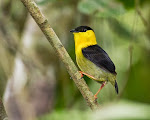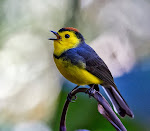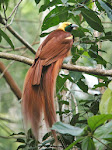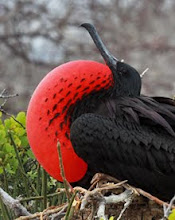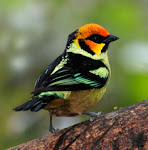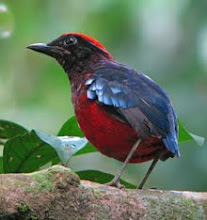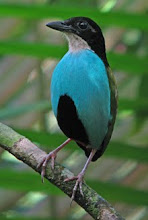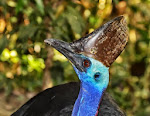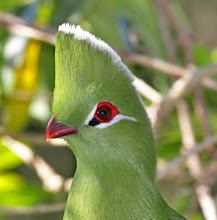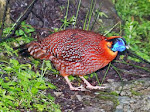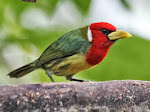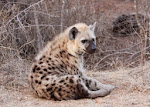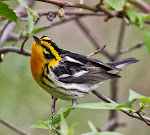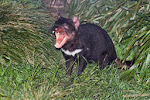


For our final day were back in the realm of the subtropics, where tall, moss-covered trees are laden with bromeliads. On this day we visited the so-called "Antpitta Farm" of Paz de las Aves, as the farmer there has managed to habituate a number of these shy species, thus beginning a trend of "antpitta taming" in Ecuador and Colombia. We left at a truly ungodly hour to get there, although not for the sake of the antpittas but for a rather more gaudy attraction. As the first glimmers of light started to push their way through the rainforest we set off down a short trail, and soon heard the ugly, pig-like squeals of our quarry, the remarkable Andean Cock-of-the-rock. This was a new lek site (as the old one had been abandoned recently), although what a boon this proved. This new spot was magical. We stood in an open topped blind, with as many as ten different vermilion males squawked, squealed and danced around us, a classic Andean scene. As we headed out from the lek we paused to admire three Golden-headed Quetzals at the forest edge too.
Then we descended Angel's valley, where his prize "possessions", the antpittas, lurk. As per normal the Giant Antpitta proved oh so easy, Maria bouncing up to us on the trail right on cue. Although an as yet unnamed recently fledged juvenile was a nice surprise as we descended to the valley bottom for another antpitta. This species as is often the case took a little digging, although right when the group were losing their will to live Angel and his brother Rodrigo, gestured for us to follow them. A hairy trip across a slippery wooden bridge and we were soon face-to-face with Willy, a showy Yellow-breasted Antpitta that posed atop a rock for us making the wait all the more worthwhile (middle photo). As we headed back towards the cafe we got distracted for quite a time at Angel's new fruit feeders which were a hive of activity, a pair of Olivaceous Piha (bottom photo), several Toucan Barbets, a few Black-chinned Mountains-Tanagers (top photo) and a Crimson-rumped Toucanet making this a must-see spot. A male Orange-breasted Fruiteater hiding out in the trees above was not too shabby either!
As we emerged out of the dark forest we checked his hummingbird feeders at the forest edge which held 11 hummer species, including the dazzling Velvet-purple Coronet among an all star cast that also included Violet-tailed Sylph and Empress Brilliant. We ended with a fine Ecuadorian spread at his cafe, and after a final bit of forest birding we had to retreat back to Quito, with our bellies full of empanadas and our heads full of incredible birds!














































